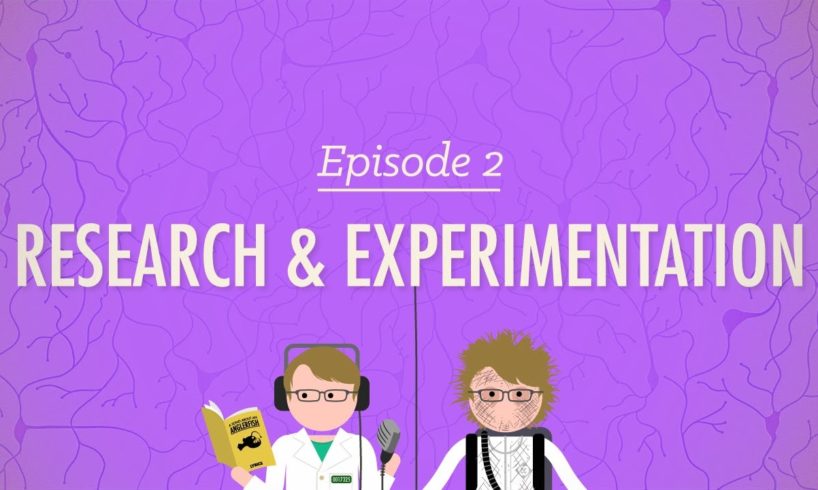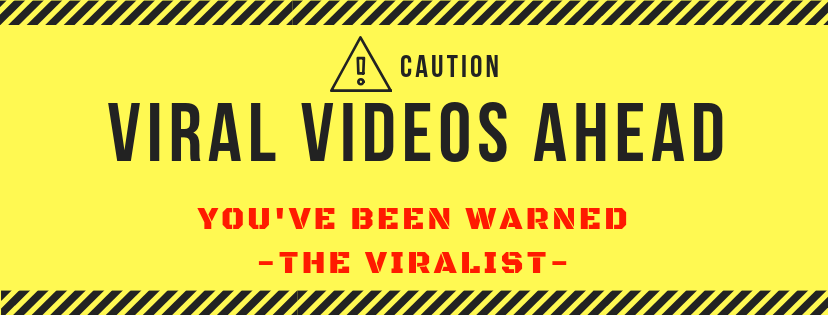
So how do we apply the scientific method to psychological research? Lots of ways, but today Hank talks about case studies, naturalistic observation, surveys and interviews, and experimentation. Also, he covers different kinds of bias in experimentation and how research practices help us avoid them.
Want more videos about psychology? Check out our sister channel SciShow Psych at https://www.youtube.com/scishowpsych!
—
Table of Contents
The Scientific Method 2:06
Case Studies 3:05
Naturalistic Observation 3:48
Surveys and Interviews 4:15
Experimentation 6:35
Proper Research Practices 8:40
—
Crash Course is on Patreon! You can support us directly by signing up at http://www.patreon.com/crashcourse
Want to find Crash Course elsewhere on the internet?
Facebook – http://www.facebook.com/YouTubeCrashCourse
Twitter – http://www.twitter.com/TheCrashCourse
Instagram – https://www.instagram.com/thecrashcourse/
CC Kids: http://www.youtube.com/crashcoursekids
source







do you have a recommendation of a book that would explain everything about psychological research?
i still dont get it
@ NTA NET Psychology Paper December 2019 (Q1-10): Answer Keys, Solutions & Explanations (Part 1 of 10)
I’m a year 10 applying for colleges soon I’m looking into taking a psychology course as I want to Pursue a career in phycotherapy and I hope these videos help me out
I’m bout to binge watch this so I can get a head start in next year’s AP psychology class…imma ace that class…🥺🥺I have to
Intuition is very much a real thing
So basically:
Hindsight Bias: Hindsight bias is a psychological phenomenon that allows people to convince themselves after an event that they had accurately predicted it before it. Suppose your friend starts eating the pizza that's been in the fridge for the past week and you tell him "week-old pizza cause psychedelic hallucinations" but he eats it anyway and soon start to wig out. You'd say "Dude, I told you so".
But if you are wrong and he's totally fine, you probably won't even think about it ever again. This is known as 'Hindsight Bias" or the "I-Knew-It-All-Along" phenomenon. This doesn't mean the common sense is wrong, it just means that our intuitive sense more easily describes what just happened, than what will happen in the future.
"We also tend to perceive order in random events, which can lead to false assumptions." For example, if you flip a coin five times you have equal chances of getting all tails as you do getting alternating heads and tails. But we see the series of five tails as something unusual, as a streak, and thus giving that result some kind of meaning that it very definitely does not have.
That is why we have the methods and safe-guards of psychological research and experimentation which basically save the study of our minds from the stupidity of our minds like hindsight bias and perceiving order in random events.
Steps of Psychological Research:
Take for example we are researching "Can week-old pizza cause psychedelic hallucinations? Does coffee make you smarter? Or does it just make you do dumb stuff faster?"
-Operationalizing the Questions: Figuring out how to ask general question about your subject and turn them into mesurable & testable propositions.
-Theory & Hypothesis: Any Scientific method starts with a question and a theory is not a hunch like "a quad-shot of espresso makes you think better"). Theory is what explains and organizes lots of different observations and predicts outcomes. And when you come up with a testable prediction, that's your hypothesis.
-Replication is key:
Once your theory and hypothesis are in place, you need a clear and common language to report them with, so for example, defining exactly what you mean by "thinking better" with your espresso hypothesis will allow other researchers to replicate the experiment.
And replication is key.
You can watch a person exhibit a certain behavior once, and it won't prove very much, but if you keep getting consistent results, even as you change subjects or situations, you're probably on to something.
Describing behavior without manipulating it and making connections and predictions from those findings:
Describing Behavior:
-Case Studies:
Case studies take an in-depth look at one individual. They can be misleading because by their nature, they can't be replicated, so they run the risk of over-generalizing.
However case studies are good at showing what can happen and end up framing questions for more extensive and generalizable studies.
They're also often memorable and a great story telling device psychologists use to observe and describe behavior.
For example, say the smell of coffee make someone anxious and irritable doesn't been that it has the same effect on everyone. In fact, the person may have terrible memories associated with that smell, and so his case is actually quite rare.
But you would still have to look at lots of other cases to determine that conclusively.
-Naturalistic Observation:
In naturalistic observation, researchers simply watch behavior in a natural environment. The idea is to let the subjects just do their thing without trying to manipulate or control the situation.
Like case studies, naturalistic observations are great at describing behavior, but they're very limited in explaining it.
-Interviews & Surveys:
Psychologists can also collect behavioral data using surveys or interviews, asking people to report their opinions and behaviors.
While carrying out a surveys it's important
-How you ask:
Surveys are a great way to access consciously held attitudes and beliefs, but how to ask the questions can be tricky; subtle word choices can influence results.
For example more forceful words like "ban" or "censor" may elicit different reactions than "limit" or "not allow".
-Who you ask:
And if how you phrase surveys is important, so is who you ask.
For example the result of asking a room full of students at a pacifist club meeting what they think about arms control, be a representative measure of where students stand, because there's a pretty clear "sampling bias" at work here. To fairly represent a population, a random sample is required where all members of the target group, in this case students, had an equal chance of being selected to answer the question.
So once you've described behavior with surveys, case studies, or naturalistic observation, you can start making sense out of it, and even predict future behavior.
Correlation:
One way to do that is to look at one trait or behavior is related to another, or how they correlate.
Suppose a person thinks that his refrigerator is actually some kind of time machine that can preserve food indefinitely and because he was hungry he ate the leftover pizza that may have had a little bit of fungus on it.
Suddenly, he starts seeing things: green armadillos with laser beam eyes.
From here we could deduce that eating unknown fungus predicts hallucination, that's a correlation.
-Correlation is different to Causation: Correlation is not causation though.
Though it make sense that the hallucinations were result of the questionable fungus, the person may be already on the verge of a psychotic episode and those fuzzy leftovers were actually benign. There there could be an entirely different factor involved, like maybe he hadn't slept in 72 hours, or had an intense migraine coming on, and one of those factors caused his hallucinations.
It's quite tempting to draw conclusions from correlation but it's important to remember that correlations predict the possibility of a cause-and-effect
relationships; they cannot prove them.
So we've talked about "how to describe behavior without manipulating it and how to make connections and predictions from those findings".
Experimentation:
Experimentation really get to the bottom of cause-and-effect behaviors. Experiments allow investigators to isolate different effects by manipulating an independent variable, and keeping all other variables constant, or as constant as you can.
This means that they need at least two groups:
-Experimental Group: which is gonna get messed with.
-Control Group: which is not gonna get messed with.
Just as surveys use random samples, experimental researchers need to randomly assign participants to each group to minimize potential confounding variables, or outside factors that may skew the results.
-Double blind procedure:
Sometimes one or both groups are not informed about what's actually being tested.
For example, researchers can test how substances effect people by comparing their effects to placebos, or inert substances.
And often, the researchers themselves don't know which group is experimental and which is control, so they don't unintentionally influence the results through their own behavior, in which case it's called, you guessed it, a double blind procedure.
So let's put these ideas into practice in our own little experiment.
Let's me and my friend are debating Caffeine's effect on the brain.
Personally, my friend is convinced that coffee helps her focus and think better, but I get all jittery like a caged meerkat and can't focus on anything.
And because we know that overconfidence can lead you to believe things that are not true, we decided to use some critical thinking.
Question: So let's figure out our question: "Do humans solve problems faster when given caffeine?"
Testable prediction: "Adult humans given caffeine will navigate a maze faster than humans not given caffeine."
Independent Variable: The caffeine dosage is your independent variable, the thing that you can change.
Dependent Variable: the thing that depends on the thing that you can change is going to be the speed at which the subject navigates through this giant corn maze.
Experimentation:
Control Group: So the control group gets a placebo, in this case decaf.
Experimental group one: Experimental group one gets a low dose of caffeine, which we'll define at a 100 milligrams; just an eye opener, like, a cup of coffee's worth.
Experimental group two: Experimental group two gets 500 milligrams, more than a quad shot of espresso dunked in a Red Bull.
Once everyone is dosed, we turn them lose in the maze and wait at the other end with a stopwatch to measure the results from the three different groups and compare them to see if there were any conclusive results.
If the highly dosed folks got through it twice as fast as the low dose and the placebo groups, then our hypothesis was correct, and she can rub my face in it saying she was right all along, but really that would just be the warm flush of hindsight bias telling her something she didn't really know until we tested it.
Then, because we've used clear language and defined our parameters, other curious minds can easily replicate this experiment, and we can eventually pool all the data together and have something solid to say about what that americano was doing to your cognition– or at least the speed at which you can run through a maze.
he's the only one i have to listen to 0.75x and it does sound normal, instead of the usual 1.5x i go with others (english is not my first language so i struggle to keep up)
i actually drinking coffe and eating Hawaiian pizza rn 😅
🙂
Why is he speaking so fast
Am I the only one who thinks this is boring but my brain tells me to watch this?
"Pizza won't make you trip." What about meatball subs?
How many people are watching this because they actually wanna learn something?
(& not just because they have an exam or are bored in quarantine.)
24 minutes away from my ap exam 😅 wish me luck
Watching this the hour before AP Psych Exam and actually got some vital information.
Who's watching his videos the day of the exam lol
AP Virtual Pscy 2020 gang where you at!
Okay seriously go study and stop reading the comments we have an exam in literally 1 hour
Lol who’s watching this before the AP Psych 2020 Exam during Corona 😭
Watching this right before taking the AP Psych exam today lmaooo
test is today, in 10 hours
We here all cramming despite what we learned in psychology.
IT IS TIME TO CRAM
Goood luck to everyone tomorrow👍
bingeing before the exam
Coming here for the AP psych exam because I took the class last semester and the test is thIS WEEK
3:53 anyone else notice the little guy on the bottom left?
Hank is an ancient god of wisdom and learning who blesses us with his teachings
the green laser armadillo thing brings up a memory so distant im not even sure its real… art gallery… dad… was it all a dream? WHAT IS IT?!?!?!
well thank you for this. now I can pinpoint what's flawed from my idea for my thesis.
Why should i trust an experiment that keeps giving same results altough there is a posibility to have a different result and not trust a coins that give me same result(tails ) although there is another possibility that is to have all coins (heads)
Is it me or he needs to slow down? O_o There is lots of information to process and he doesn't leave any space to digest.
Who’s here before online exams lol
I’m majoring in psychology in univ in Japan. In order to enter the graduate school, I have to pass the test which includes reading psychological articles in English. I have knowledge about psychology to some extent, but very limited vocab and phrases about psychology in English, so this series of videos is so helpful to me 😀
Hi! Why there is a need to have the low dose group for the caffeine experiment?
im gonna be addicted to this I just know
i have the felling i should watch more of these videos
Hmmm…
Hello, i searched your page, couldn´t find it, it´s so sad, what happened?
𝚃𝚘𝚘 𝚏𝚊𝚜𝚝..
I’m a 4th year psych major 😂 I’m just watching to keep myself sharp 😂
But does the coffee experiment prove smarts or speed?🤔
*Me going to make a naturalistic observation
Friend:Where are you going ?
Me:I'm going to spy on someone.
I’m just watching this cause I’m genuinely interested in psychology and I see all the stressed students in the comments 😂